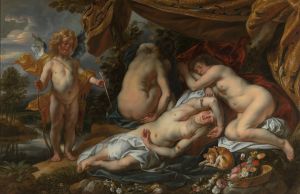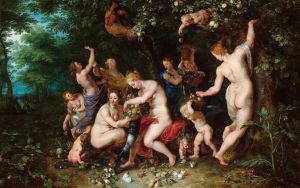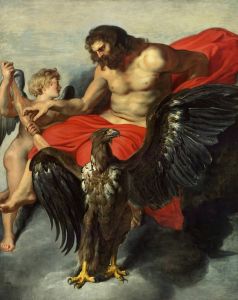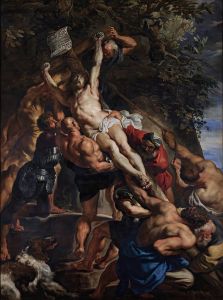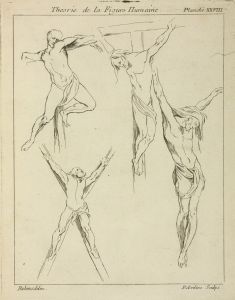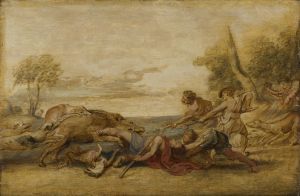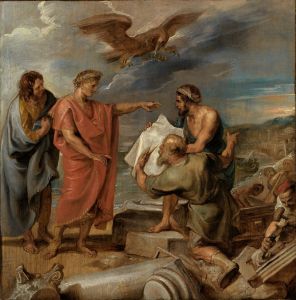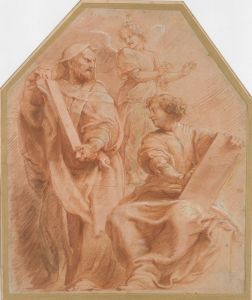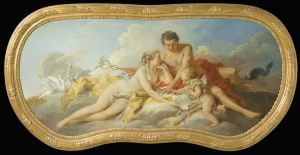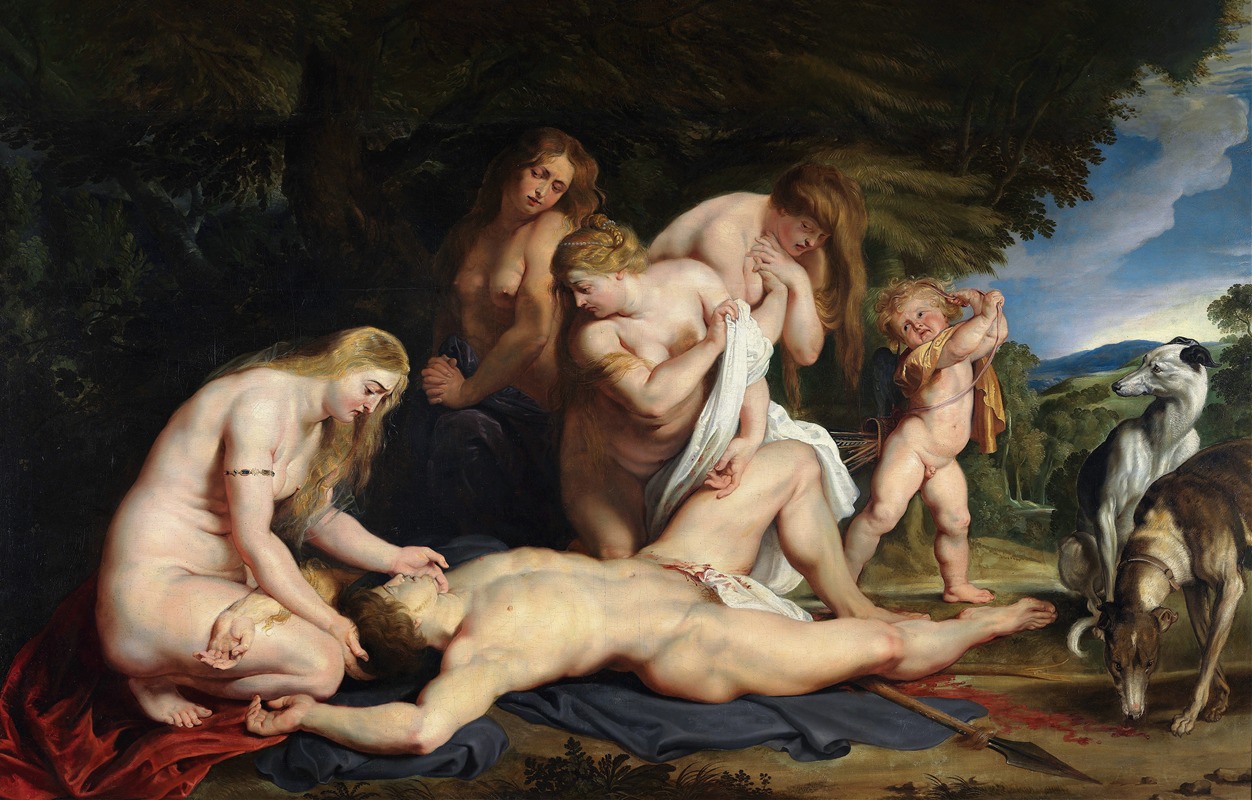
The Death of Adonis
A hand-painted replica of Peter Paul Rubens’s masterpiece The Death of Adonis, meticulously crafted by professional artists to capture the true essence of the original. Each piece is created with museum-quality canvas and rare mineral pigments, carefully painted by experienced artists with delicate brushstrokes and rich, layered colors to perfectly recreate the texture of the original artwork. Unlike machine-printed reproductions, this hand-painted version brings the painting to life, infused with the artist’s emotions and skill in every stroke. Whether for personal collection or home decoration, it instantly elevates the artistic atmosphere of any space.
Peter Paul Rubens' The Death of Adonis is a Baroque-era painting that depicts the mythological death of Adonis, a figure from Greek and Roman mythology. Adonis, a mortal beloved by the goddess Venus (Aphrodite in Greek mythology), is fatally wounded by a wild boar during a hunt. The painting captures the dramatic moment of his death, a subject that was popular in Renaissance and Baroque art due to its emotional intensity and mythological significance.
Rubens, a Flemish artist renowned for his dynamic compositions and mastery of color, created this work in the early 17th century. The painting exemplifies his ability to convey movement, emotion, and sensuality, hallmarks of the Baroque style. In The Death of Adonis, Rubens employs a rich palette and dramatic contrasts of light and shadow to heighten the emotional impact of the scene. Venus is often depicted mourning over Adonis' lifeless body, surrounded by other mythological figures, such as the Three Graces or Cupid, though the exact composition may vary depending on the version of the painting.
Rubens was known to revisit themes and create multiple versions of his works, sometimes with the assistance of his workshop. As a result, there are variations of The Death of Adonis attributed to Rubens and his studio. These versions may differ in composition, size, and details, reflecting the collaborative nature of his workshop and the demand for his mythological subjects among patrons.
The painting draws on classical mythology, specifically the story of Adonis as recounted in Ovid's Metamorphoses. According to the myth, Adonis' death symbolizes the cycle of life, death, and rebirth, as his blood is transformed into the anemone flower. This theme resonated with Baroque artists, who often explored the fragility of human life and the inevitability of death in their works.
Rubens' treatment of the subject reflects his deep knowledge of classical literature and his ability to translate these narratives into visually compelling compositions. His work was highly influential, inspiring other artists of his time and later periods to explore similar themes.
Today, versions of The Death of Adonis attributed to Rubens can be found in various museum collections, though the exact provenance and details of each version may vary. The painting remains a testament to Rubens' skill as a painter and his enduring fascination with classical mythology.






